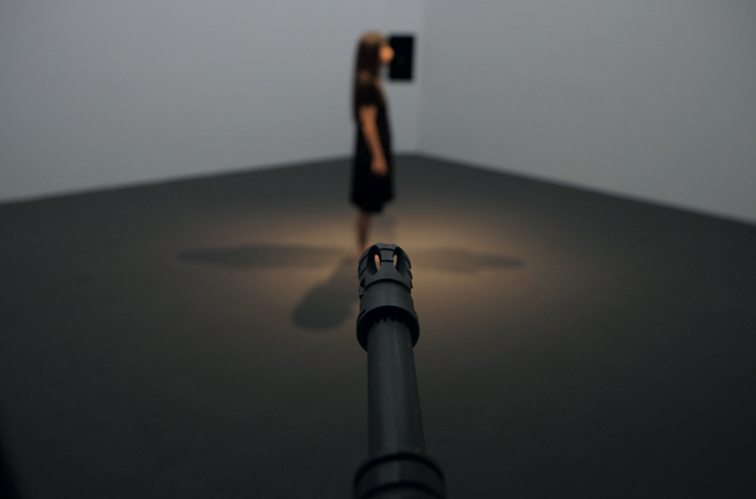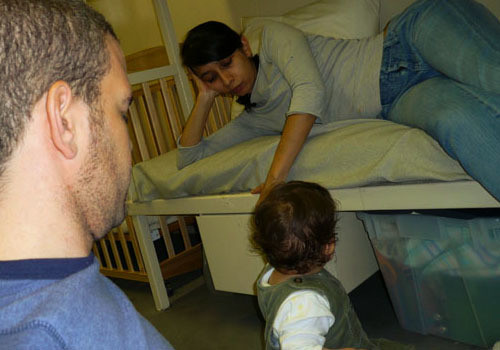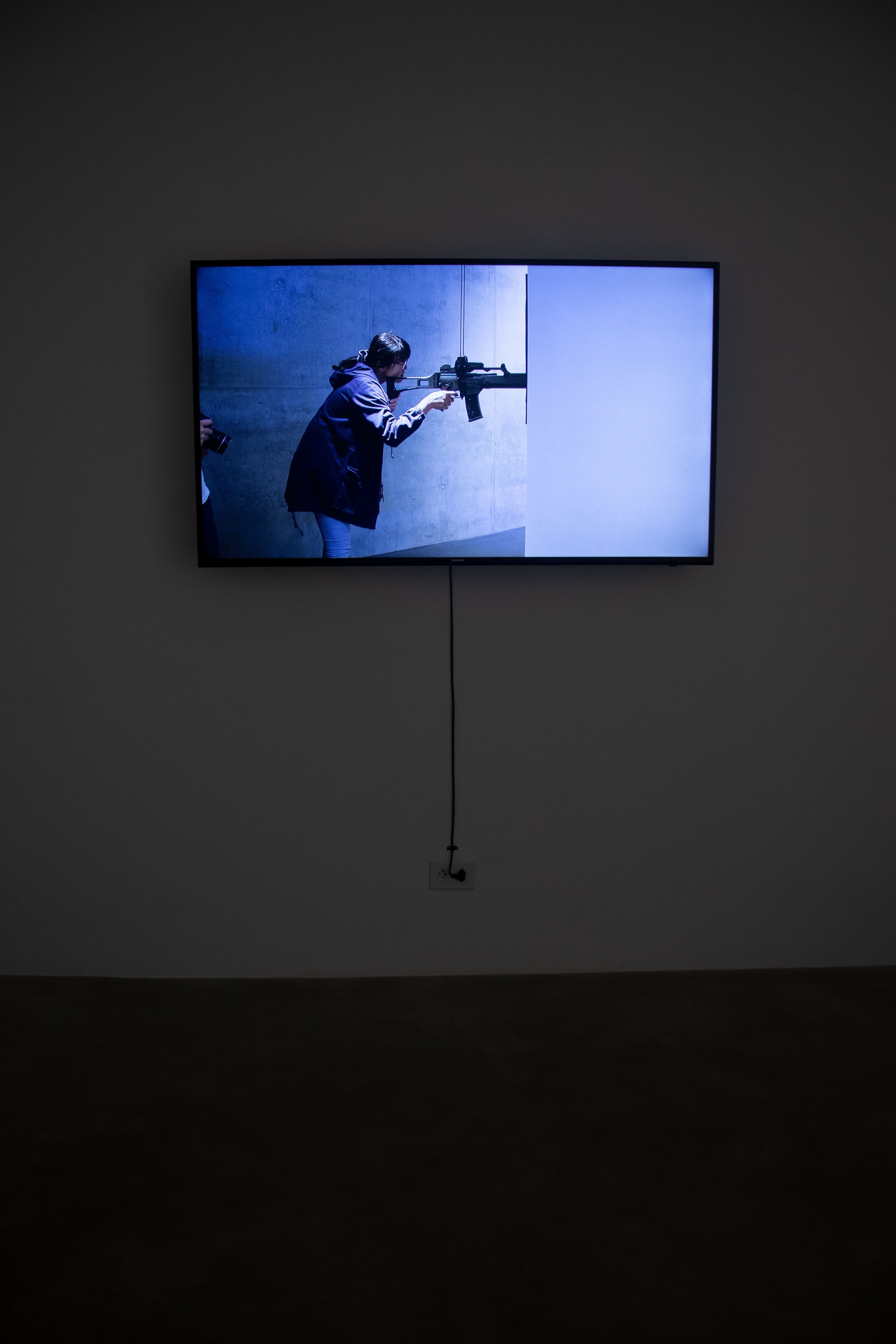
ANESTESIA, ANISTIA, AMNESIA
Regina José Galindo
with presentation by Tom Nóbrega
Cris Ambrosio and Pontogor (org.)
opening february 9th 2023
5 p.m. - 9 p.m.
10.02 - 15.04.23
wednesdays to fridays, 1 p.m. - 7 p.m.
saturdays 11 a.m. - 7 p.m.
free admission
travessa dona paula, 120
são paulo - sp
La Verdad, 2013
HD single channel video loop
1 hour 10 min. 39 sec.
El objetivo, 2017
HD single channel video loop
7 min. 40 sec.
America’s Family Prison, 2008
Single channel video loop
56 min. 49 sec.



turn your back on the past. put your fingers on the hinge of the door and close it with pleasure, as if you were sealing off yesterday's passage1
efraín ríos montt died at the age of 91 / “he died at home, with the love of his family, with a clear conscience, surrounded by a lot of love, affected by the diseases of which we already know and with the conviction that in this country there has never been genocide and that he was innocent of whatever he was accused of”2, announced his lawyer luis rosales / ríos montt was convicted of genocide in 2013, only to have his sentence overturned by the constitutional court a few months later / in the seventeen months he was president of guatemala, after staging a coup d'état, between 1982 and 1983, it is estimated that about 10,000 indigenous people were killed in unofficial executions / the reserve general, who destroyed 600 mayan villages, after appealing the sentence, never went through a new trial / “the true christian carries the holy bible in one hand and a machine gun in the other”³, said ríos montt in what would become his most famous quote / evangelical pentecostal convert, he was one of the leaders of the congregation called “el verbo”/
efraín ríos montt died at the age of 91 / “he died at home, with the love of his family, with a clear conscience, surrounded by a lot of love, affected by the diseases of which we already know and with the conviction that in this country there has never been genocide and that he was innocent of whatever he was accused of”2, announced his lawyer luis rosales / ríos montt was convicted of genocide in 2013, only to have his sentence overturned by the constitutional court a few months later / in the seventeen months he was president of guatemala, after staging a coup d'état, between 1982 and 1983, it is estimated that about 10,000 indigenous people were killed in unofficial executions / the reserve general, who destroyed 600 mayan villages, after appealing the sentence, never went through a new trial / “the true christian carries the holy bible in one hand and a machine gun in the other”³, said ríos montt in what would become his most famous quote / evangelical pentecostal convert, he was one of the leaders of the congregation called “el verbo”/
1 GALINDO, Regina. Eu não sou a Pizarnik, translated by Julya Vasconcelos. Recife, 2021: Edições Flecha, p. 93.
2 José Efraín Ríos Montt, former Guatemalan dictator, dead at 91. Portal G1, 01/04/2018. See
3 TORTAMANO, Caio. “A true Christian carries a bible in one hand, and a machine gun in the other: the horrors of dictator Efraín Ríos Montt.” Portal Aventuras na História, 17/03/2020. See
2 José Efraín Ríos Montt, former Guatemalan dictator, dead at 91. Portal G1, 01/04/2018. See
3 TORTAMANO, Caio. “A true Christian carries a bible in one hand, and a machine gun in the other: the horrors of dictator Efraín Ríos Montt.” Portal Aventuras na História, 17/03/2020. See
the word amnesty and the word anesthesia have the same roots / both come from the ancient greek αν-, an-, "absence"; and αἲσθησις, aisthēsis, "sensation" / every time you try to block out the pain, other sensations are also numbed / every time you promote forgetfulness, any aesthetic is blurred or shattered / one of the definitions of anesthesia is “reversible absence of consciousness” / a phrase that, if on the one hand, it reminds us that the torpor caused by anesthetics does not last indefinitely, on the other hand, it signals that amnesty produces an absence of historical awareness/ when we act without looking at the absences left behind, we allow the ghosts to roar and the deaths are repeated / if anesthesia causes a total or partial absence of awareness of the members of a body, which can also be a social body, amnesty causes a lack of awareness of the absence / anesthesia is an induced blockade of the nerves, which causes loss of responsiveness, loss of reflexes, decreases our response to blows and attacks /
my childhood in guatemala was spent comfortably in a lower middle class house in zone 3. very little or nothing was said about the war. actually I think I only heard about it after a bomb exploded near my high school in zone 14
my childhood in guatemala was spent comfortably in a lower middle class house in zone 3. very little or nothing was said about the war. actually I think I only heard about it after a bomb exploded near my high school in zone 14
4 Excerpt of Regina José Galindo interview to Viviana Siviero. In: SAVORELLI, Livia (org.) Regina José Galindo. 2006: Vanilla Edizioni, Roma.
“no amnesty”, shouted the crowd in front of the planalto palace on january 1st in brasilia, a week before another crowd, who had spent two months sleeping in barracks asking for military intervention, broke the windows of the planalto palace, the congress and the federal supreme court, throwing chairs and perforating the screens of frames / the amnesty law, sanctioned in 1979 by joão batista figueiredo, the last general to be president of brazil during the period of the military dictatorship, at the same time that it allowed the return of political exiles, it guaranteed the immunity of torturers / according to the report of the national truth commission, which in 2011 and 2014 gathered several testimonies regarding the brazilian business-military dictatorship, in the period between 1964 and 1985, at least 8,350 indigenous people were killed in “massacres, dispossession of their lands, forced removals from their territories, contagion by infectious and contagious diseases, imprisonment, torture and ill-treatment”5 /
5 “Comission of Truth: at least 8,3 thousand indigineous dead by military dictatorship”. Portal Amazônia Real, 11/12/2014. See
reality was hidden, it didn't matter, it was something that happened in the interior of the country, which involved the army, the guerrillas and the indigenous people... and we didn't belong to any of those groups. This is how the guatemalan middle class thinks; it is and has always been apart, far from the truth, always living with its eyes closed, pretending not to know (...) a group anesthetized by its own lies and its unconsciousness6.
all your work can be described as an attempt to break the torpor, revert unconsciousness / you start with poetry, with words, but you soon realize that in a place ravaged by genocide, it is not possible to speak without first getting close to that which is not heard, that which throbs in silence / there is no aesthetic possible without breaking indifference / you place our eye on the objective lens, reminding us that to remain indifferent is to play at target practice
all your work can be described as an attempt to break the torpor, revert unconsciousness / you start with poetry, with words, but you soon realize that in a place ravaged by genocide, it is not possible to speak without first getting close to that which is not heard, that which throbs in silence / there is no aesthetic possible without breaking indifference / you place our eye on the objective lens, reminding us that to remain indifferent is to play at target practice
6 Idem ibid.
let's stick our tongue in the freezer, let's train for silence 7 you set up a scene in which your mouth is invaded by a latex glove while reading a series of testimonies / you remind us of the legitimized asepsis of the courts that try to stop testimonies / this time, the one who opens your mouth, wearing blue hospital clothes, follows your instructions / you remind us of the disguised invasion behind all asepsis / in north american detention containers, destined for latinos who dare to cross the border / an asepsis reigns similar to that which reigns in airports, hospitals, museums and art galleries / in a space that is anesthetized in itself, you make use of your allegorical brutality to signal the anesthesia, to break with indifference / death has no metaphor / it's simple and clear / you stop working / you get stiff / in the middle of everything8 / your lively and tense allegories seek to point to our indifference towards those who are not here /
7 GALINDO, Regina. Eu não sou a Pizarnik. Op. cit., p. 19
8 Idem ibid., p. 39.
a testimony is not a poem / a testimony is a paradoxical thing: in it, words signal absences, but they can only be said, read and heard by those who are alive / I'm not dead / the ink / existing on paper / confirms me / “i'm alive”, says an indigenous woman when giving her testimony at the ríos montt trial / in one of your interviews, you remind us that, although the general's conviction was annulled, something fundamental happened in his trial / the surviving women asserted their lives in front of the aggressor / narrated the cruelty of the violations, pointed to the principal, were heard by the indifferent, had their words recorded in writing / a testimony challenges the trauma/ subverts the words to point to a pain that cannot be verbalized, named or symbolized / the reports bring us closer to what we have not seen, to what cannot be said / the hole of meaning opened by a brutality that cannot be legitimized
9 Idem ibid., p. 41.
i’m common place10, you say / you know well that you cannot be in the victims' shoes, except as a sign/ you also know that someone has to do the dirty work, the impossible exercise of putting yourself in the other's shoes / you make the risky gesture not only of transforming yourself into a body sign, but also a hand that writes, a mouth that speaks / you don't just put yourself in the place of the victim, but in the place of the boss, the one who plans the scene / you present your body as a substitute for something that is intolerable / re-enact what cannot be named / by placing our eye on the gun’s scope, you mark the positions, design the scene, study ways to put yourself as a target / there are those who point their cell phones at the gun’s scope, there are those who film the spectator who frames the scope of the rifle / crosshair within the crosshair, metalinguistic crosshair / you create cutouts within art spaces to signal zones of privilege and zones of abjection / body sign substitute body / index of blood footprints whose ephemeral paths surround the public buildings /
10 Idem ibid., p. 45.
tom nóbrega
(translated by claudia nogueira)
(translated by claudia nogueira)
realização coleção moraes-barbosa [pedro barbosa e patrícia moraes] // organização, produção executiva e expografia: cris ambrosio, pontogor // texto: tom nóbrega // cartaz: camila bigliani, pontogor // maquete 3d: pontogor // montagem: cris ambrosio, pontogor // transporte: ivanildo josé alves // tradução e legendagem: cris ambrosio // redes sociais: bruno baptistelli, erica ferrari // recepção: erika silva // serviços gerais: joseane da silva,
celia regina alves lima // arquivo: karol pinto, leila zelic // impressão: gráfica cinelândia // adesivagem: omamulti // agradecimento: deyson gilbert
celia regina alves lima // arquivo: karol pinto, leila zelic // impressão: gráfica cinelândia // adesivagem: omamulti // agradecimento: deyson gilbert


